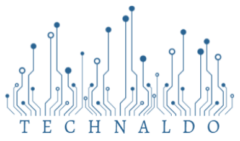Do you want to know the primary 7 phases of SDLC? Here we will discuss what an SDLC is and why we should follow its phases, and then we’ll come up to the essential stages of SDLC.
All software development involves several stages, whether a simple commercial product or a little landing page. For a successful outcome, careful adherence to the software development process these phases are essential for engineers and their clients.
Why should we follow the 7 Phases of SDLC?
A software company will follow the 7 phases of the SDLC process when working on a software project, used to improve both the software development process and its quality. Following are the main reasons why SDLC is essential for developing a software system are:
- It is simple to calculate the costs and growth of the developed system.
- The SDLC improves the control and monitoring of important or complex projects.
- The steps in it are thorough and in great detail.
- The design assessments ensure the created solution’s dependability and excellence.
- SDLC thoroughly documents the system.
- If a critical project participant leaves, another can continue where they left off.
- It assists in assessing, planning, and estimating deliverables.
- It guarantees accurate and prompt delivery to the customer.
- It gives a foundation for a collection of uniform actions and outputs
- Increases development efficiency
What is Software Development Life Cycle (SDLC)?
A software company will follow the SDLC process when working on a software project. To create software or hardware, there are even seven major phases that we can list. The goal of this methodology is to improve both the software development process and its quality.
7 Phases of SDLC
Now let’s discuss all 7 phases of the System Development Life Cycle, which every software developers follow to develop the perfect software.
Phase 1: Planning
A “feasibility report” is also the awareness of our customer’s requirements and the amount of capital, time, and resources we can contribute to the success of their product. And when we are in the preparation phase, you must keep the following three things in mind at all times:
- Identifying the development system
- Conducting a feasibility study
- Creating a project plan
Also, consider whether initiating software or program development benefits investors or the business. Additionally, it serves as a stage for evaluating our company’s software and business capabilities.
Phase 2: Collecting Requirements
The requirement is the next phase of SDLC. The team ensures that the system’s end user’s project requirements are met. The company must collaborate with IT departments to communicate the new technology and improvement criteria. Architects, developers, and product managers collaborate with SMEs to document software automation’s business procedures. By putting all the information on a single sheet of paper and following it, this stage of the system development life cycle helps meet the client’s needs.
Phase 3: Architectural Design and Prototyping
After determining the requirements, developers, and software architects begin designing the software. To address algorithmic issues, software developers employ tried-and-true development techniques. Rapid prototyping is frequently incorporated into the design process. Teams receive design documents after this phase that includes the code used as a starting point for subsequent development and the patterns and components selected for the project.
Phase 4: Coding and Software Development
SDLC’s most significant phase is coding. Using the chosen programming language, developers begin constructing the entire framework in this step. Tasks are divided into units or modules and assigned to specific developers during the coding process. Throughout this process, developers will adhere to predetermined coding guidelines. In addition, they will build and run the code using programming tools like debuggers, interpreters, and compilers.
Phase 5: Testing
DevelopersTesting After completing the coding, testing begins, and the modules are available for evaluation. Software testing is necessary to prevent bugs. The software is thoroughly examined, and any problems are assigned to the developers for fixing during this step.
Phase 6: Software Deployment
During this phase of SDLC, the objective is to transfer the software into the manufacturing environment so that customers can begin using the product. However, many businesses would move the product through various delivery environments, such as testing or staging areas. It lets everyone involved safely play with it before the product is on the market. As a result, we can catch any last-minute errors before launching the product.
Phase 7: Maintenance
SDLC must carry out a maintenance cycle after it has completed all stages in which the software is periodically updated and modified to accommodate changes. The country’s success in the software market today is because every best software development company adheres to the stages of the SDLC processes.
Conclusion:
By following these 7 phases of SDLC, you can provide what a client requires. You can implement an SDLC process to guarantee project efficiency. Thanks to its advanced framework, managers, designers, developers, and customers can follow a series of activities.
Also, read Workforce Software Monday– A Modern Software to Effectively Manage Employees

